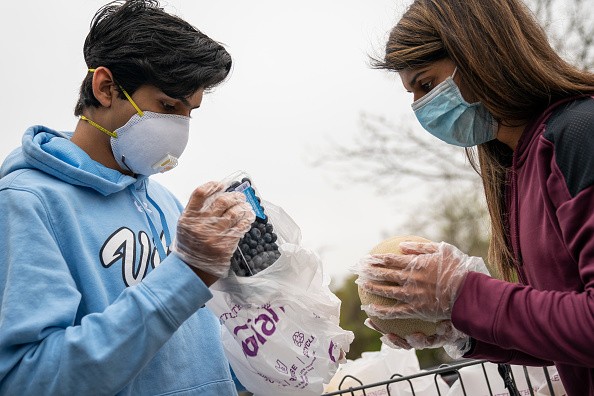Teens More Likely to Contract COVID-19 Compared to Younger Kids
Teens between the ages of 12 and 17 are about twice as likely to get infected by COVID-19 compared to younger kids, said a new study by the U.S. Centers for Disease Control and Prevention (CDC).
Researchers found that the weekly incidence of COVID-19 in teens and adolescents were roughly 37 cases per 100,000 children. That is almost twice the rate for younger kids between ages five and twelve.
Younger kids were reported to have an incidence of 19 per 100,000 children.

The study was published in CDC's Morbidity and Mortality Weekly Report on Monday. It analyzed COVID-19 cases in school-aged children in the U.S. from March to mid-September.
Of the 277,200 cases that were observed by researcher, 37% were in younger kids and 63% came from teens and adolescents.
Overall, pediatric COVID-19 cases in the U.S. have soared past 600,000, as reported by the American Academy of Pediatrics on Monday.
Schools Reopening, Vaccine Distribution
Scientists have struggled to understand how children get infected by COVID-19. There is also the question of how often this age group transmits the virus.
So far, findings have been inconsistent. Much of the debate was centered on children who come from primary schools.
But as the CDC separated the cases per age group, evidence pointed to older teens as more likely to transmit the virus. To be more specific, teens in high school and college show more incidence of COVID-19 than kids under the age of 10.
Dr. Muge Cevik, an infectious disease expert at the University of St. Andrews in Scotland presented this data. In a New York Times report, she said there was "less emphasis" on high schools and universities, "But I think that may be much more of a problem."
As NBC News noted, the implications of this study can help schools and teachers decide on how to reopen schools safely. The data can also help in figuring out which age groups should be prioritized once vaccines are ready for distribution.
In the study, researchers also wrote that Hispanic ethnicity was reported to be the more common victims of COVID-19. This group of children are more commonly hospitalized or admitted to nICU.
Children who also have pre-existing health problems were more likely to fall seriously ill, the analysis found. Among children who were hospitalized, 16% of them had at least one underlying medical condition and 28% died.
Children's Role in Viral Spread
Previously, health experts said children can still contribute to the spread of COVID-19. But they will less likely fall seriously ill from the disease compared to older adults.
The study may have underestimated the actual incidence of school-age children because testing is often a higher priority for those who display symptoms.
"It is important for schools and communities to monitor multiple indicators of Covid-19 among school-aged children," the researcher wrote. They also said prevention strategies should be put in place to reduce risks for students, teachers, school staff, and families.
Adults aged older than 65 are still at higher risk of COVID-19 and its complications. But while kids are luckier, they can still spread the virus to those who are vulnerable.
Check these out!
US COVID-19 Cases Exceeds 7 Million as Some States Relax Restrictions
1 in 3 Parents Want to Skip Their Children's Flu Shots Amid COVID-19 Pandemic, Study Says
Coronavirus Antibodies Found in Only a Small Portion of Americans, Study Says
Subscribe to Latin Post!
Sign up for our free newsletter for the Latest coverage!
© 2026 Latin Post. All rights reserved. Do not reproduce without permission.











